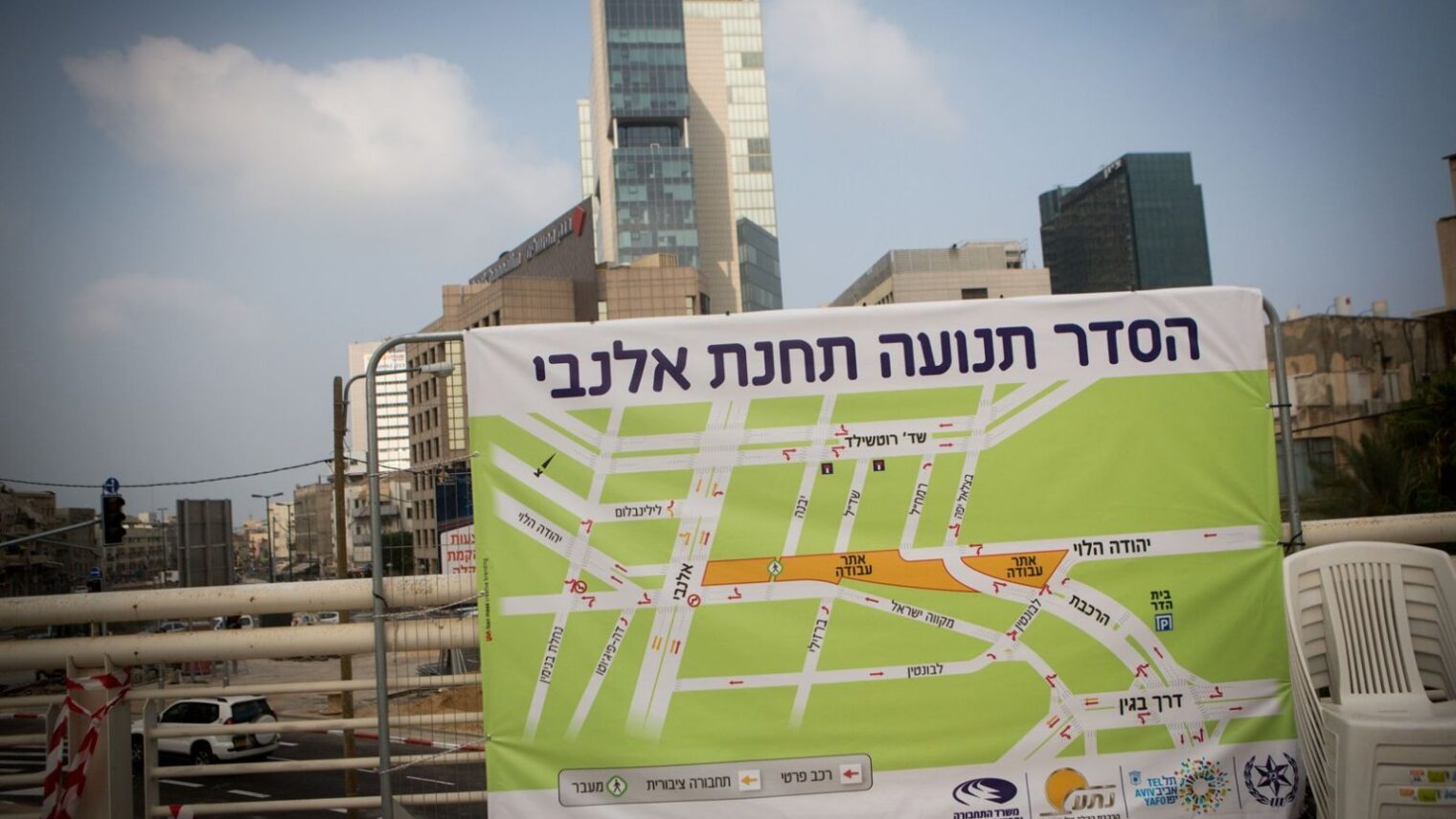Traffic is a favorite conversation topic no matter where you are. But now, Tel Aviv residents and commuters to Israel’s main business center canprematurely lay claim to the best traffic stories for the next six years.
The city’s much talked-about light rail construction is underway, and if all goes according to schedule, the line will open in 2021.
The Light Rail Red Line will eventually include 34 stations through the cities of Petah Tikva, Bnei Brak, Ramat Gan, Tel Aviv and Bat Yam. Five underground stations make up the first stage of the project.
The Tel Aviv municipality and media in Israel have scrutinized at great lengththe possible effects the project will have on the metro area.
Obviously, it is impossible to unsnarl all traffic issues when major roads are being closed and other busy streets into the downtown business areas are being turned into one-ways.
But commuters to the city center were still surprised in the first week of construction to find that roads they were told would be open were not, and with the help of Waze they were taken on a scenic route to their company parking spots.
“It took me 50 minutes instead of my usual 15. I had to go through Ramat Gan, and I started my drive in Tel Aviv,” one of the luckier workers with a saved parking space told ISRAEL21c, on Day 2 of the construction.
Of course, 50 minutes is laughable compared to what police expectwhen school starts again and as construction expands. Disruptions are anticipated to affect traffic in all directions, stretching to Ashdod, Jerusalem and Netanya.
“At the end of the day, this project is supposed to improve public transportation, so it’s worth the effort.”
An estimated 550,000 vehicles enter Tel Aviv daily. In addition to closing access points, the light rail construction sites have blocked off many parking options in the city center as well. The municipality has set up park-and-ride shuttles to discourage commuters from entering the city by car.
“We are treating these works like an operation, exactly like the visit by the pope or a visit by the US president,” Tel Aviv Districtdeputy police commanderYoram Ohayonsaid at a press conference.
A growing number of commuters from within city limits and just outside them have turned their interest to two-wheel transportation. The city’s Tel-O-Fun bicycle-sharing service has added stations in Tel Aviv as well as in bordering cities including Ramat Gan and Givatayim.
Several Facebook groups are organizing the purchase of electric bikes. “Whoever is interested in buying an electric bicycle for the closing of Tel Aviv, please be in touch,” a friend posted on my wall, adding that the more people to join the collective buy, the better the price will be.
Traffic chaos is just one slice of the effects this huge public transportation project is causing.
Residents of neighborhoods near the digging are fearful of the underground rat population popping up for a breather in their apartments. Jerusalem residents, who went through a similar ordeal when the capital’s light rail was being built, are not offering optimistic messages.
“Look quickly for an apartment in any kibbutz or town; get out of Tel Aviv until it’s over,” Jerusalem residents told Channel 2 news. “They tell you one year, two years, three years, and it ends up a decade, minimum. Run. We suffered for 10 years; everything was shut down. For 10 years it was Stalingrad here. Now the Tel Avivians will feel it. There it’s only two to three times bigger!”
And it’s not only residents who might think about moving out temporarily.The startup capital of Israel may soon see its companies moving south.
“I have companies that are now actively seeking to get out of Tel Aviv central to Beersheva and other areas,” Jerusalem Venture Partners (JVP) Managing Partner Gadi Tirosh tells ISRAEL21c.
Business owners who can’t just get up and move fear they will go bankrupt.
“I’m in utter shock. Even though I knew what was about to happen, I was still surprised by the reality of it. It’s like Yom Kippur – no pedestrian or commuter traffic. There’s no access to my restaurant,” the owner of a vegetarian/vegan fast-food eatery, at the heart of an excavation site, told Ynet. “The delivery company I work with told me they’re taking me off their list because they can’t access my place.”
But like any major city project – most notably, Tel Aviv Port, Jaffa Port, or HaTachana — the day after will be hailed as a great success by all.
“It’s an historic day,” Tel Aviv Mayor Ron Huldai told reporters. “We are beginning a very important project …that will improve life for many people when it is completed. I call on everyone to be patient. There will be traffic jams tomorrow. They’ll say it’s because of the [construction of the] light rail, as if there were no traffic jams yesterday.We’ve had traffic jams in Tel Aviv for many years. At the end of the day, this project is supposed to improve public transportation, so it’s worth the effort.”
And just to remind you all of what Tel Aviv can expect when it’s finished. Here’s our film on the Jerusalem light rail.

















